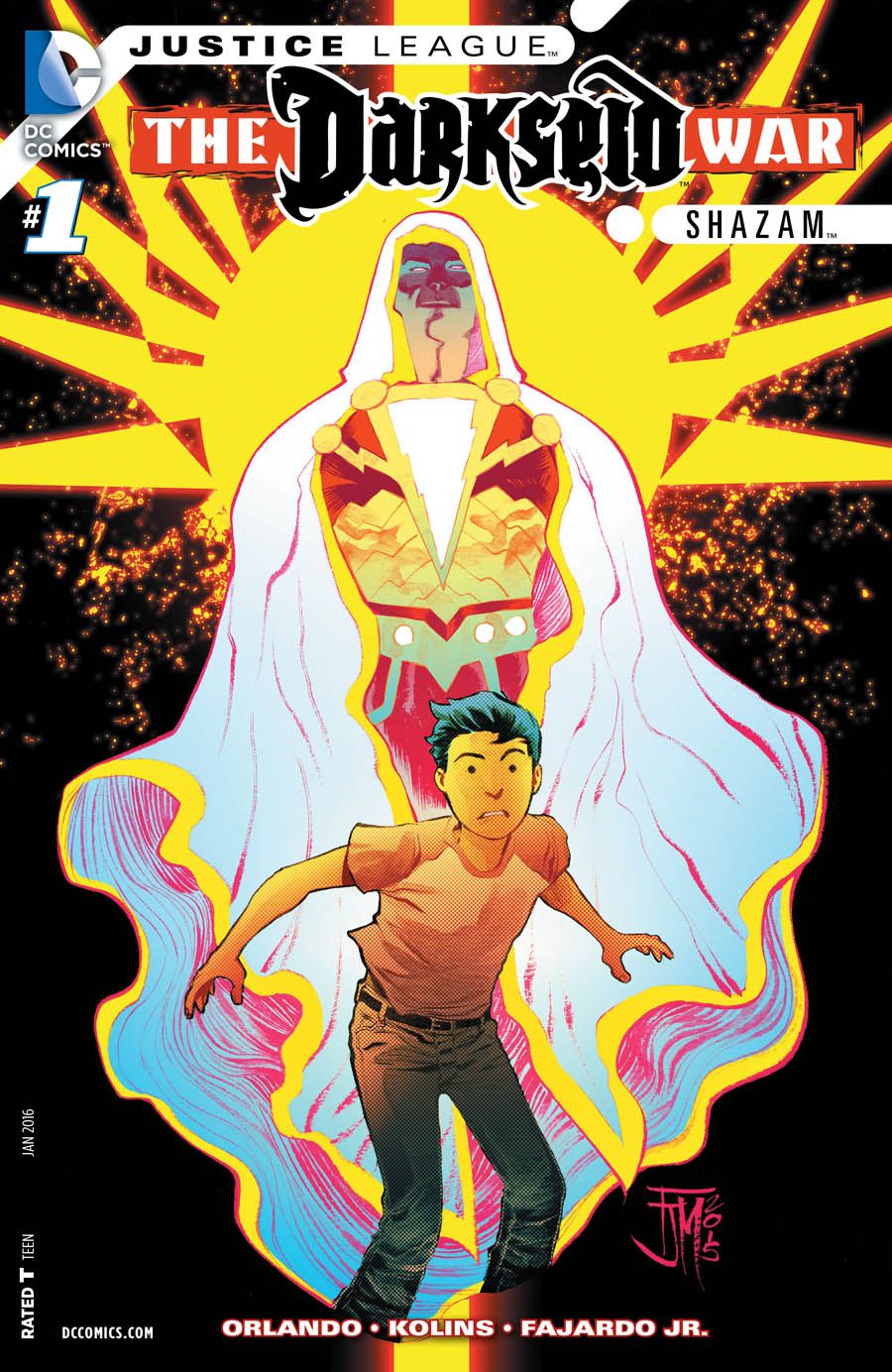Steve Orlando and Scott Kolins work with a simple enough idea in "Justice League: Darkseid War: Shazam" #1: the gods that fuel Shazam's powers were unlinked by the death of Darkseid and then replaced with new ones. However, we get more than just an exploration of who and what has stepped into those six slots; we see how these structures of power are really created.
On its surface, the issue seems fairly straightforward. Shazam, overwhelmed by the new collective of forces powering him, moves through the new deities one at a time even as he prepares to fight the dangerous bad apple that's now in the mix. From that standpoint alone, it's fun. I like that Orlando (and presumably "Justice League" author Geoff Johns) have attached Shazam mostly to brand-new, alien gods. The idea that the Wizard had to scramble to find new power sources leads naturally into non-Earth figures; after all, "Darkseid War" directly pits Earth against the forces of the New Gods on Apokolips, so there's no reason for this new power set to be constricted to just one planet.
Orlando and Kolins give us a wide variety in these different powers, too; the rune-covered hulking form of S'ivaa looks both mythic and mystic, and H'ronmeer is almost demonic while still coming across as an alien fire spirit. Romulo Fajardo Jr.'s colors mesh wonderfully here with Kolins' art; Fajardo is rapidly become a colorist whose work I look forward to, with deep rich hues that accentuate the work of the artists he colors, and this is no exception. H'ronmeer almost burns off of the page, and the reds and yellows used here are varied and attractive.
Orlando also takes the opportunity to question what truly makes gods, and who empowers whom. It's an idea that's been mooted elsewhere many times before, but I especially appreciate it being attached to Shazam, considering how his powers work. With that in place, Orlando makes Shazam's struggle against Yuga Khan both exciting and also completely logical; following the flow of power between them brings us to a reasonable conclusion, doubly so since Orlando only gets one issue to explore this idea. As with Orlando's other comics, it's thoughtful and well-presented.
As mentioned earlier, Kolins' art provides variety in the character designs, something that enriches Orlando's ideas here. I also found myself loving all of the little touches, like how the Kirby-esque design on Shazam's uniform is presented (and integrated perfectly) and the different settings for each god's realm. They all come across as fully realized and as real places, not just a background quickly slapped into place. Even the gutters between the panel borders are designed carefully, providing a cohesive and intriguing look to the comic.
Orlando, Kolins and Fajardo work extremely well together here, to the point that I'd love to see them work on another book as a team soon. (Perhaps there's a "Shazam" ongoing is in their future -- if not, DC Comics should reconsider based on the strength of this one-shot.) What could have easily been disposable is instead enthralling thanks to this creative team, and now I want to see much more of Shazam. Nicely done.

